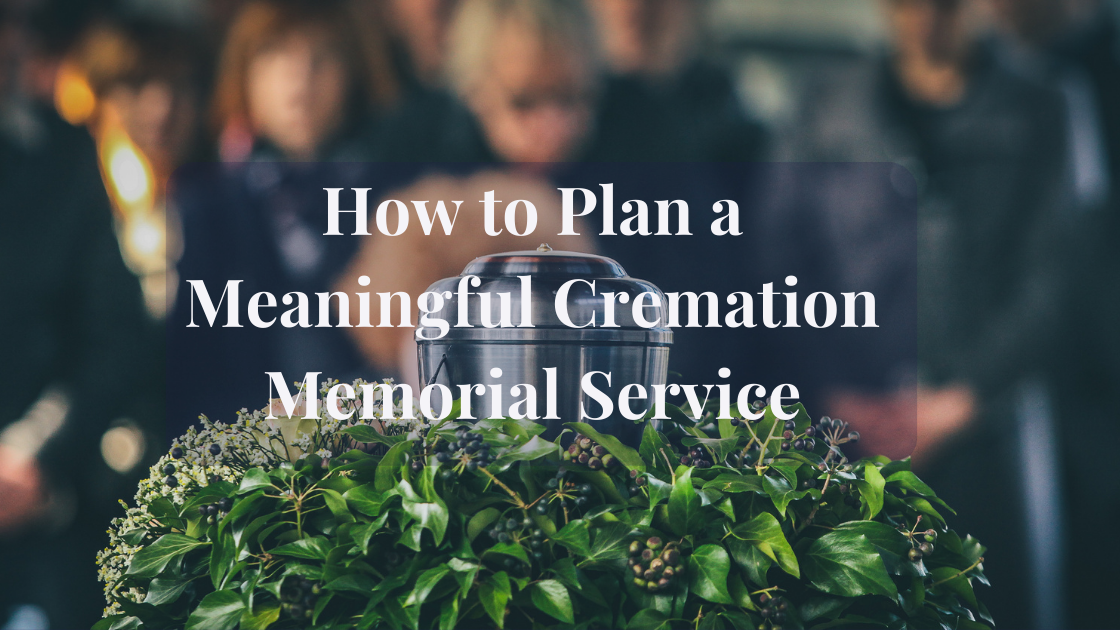When a loved one chooses cremation as their end-of-life option, planning a meaningful memorial service becomes an essential part of the grieving process. Cremation memorial services provide an opportunity to honor and celebrate the life of the departed while offering comfort and support to family and friends. In this blog post, we will explore step-by-step guidelines on how to plan a memorable and personalized cremation memorial service that pays tribute to the unique individual being honored.
Step 1: Clarify Your Goals -- Start by considering the purpose and desired tone of the memorial service, as this initial clarity will inform your planning decisions. Will it be traditional or more free-spirited? A celebration, a reflection, or a combination of both? Consider who will be attending. What will help them process their grief and say goodbye? Memorials are ultimately for the living: to remember, to honor, and to begin healing. Reflecting on the personality, values, and interests of the departed will help guide your choices.
Step 2: Select a Venue -- Securing the venue early is essential to ensure it’s available for the desired date, giving you ample time to focus on other important details. Choose a venue that reflects the loved one's personality and preferences. Consider options such as a place of worship, a community center, a park, or a location that held special meaning to the deceased. The chosen venue should also accommodate the anticipated number of attendees comfortably.
Step 3: Personalize the Ceremony -- Make it truly memoriable by infusing the memorial service with personal touches to reflect your loved one’s personality, values, and life story. Consider incorporating elements such as their hobbies, lifetime achievements, and favorite colors, songs, poems, or readings. Invite family and friends to contribute, as they may have meaningful ideas, memories, and memorabilia to share. Encourage participation by having them read letters, offer reflections, or recount special moments. For specific ideas, check out Popular Themes for Memorials.
Step 4: Create a Visual Tribute -- Incorporating a visual tribute that captures the essence of your loved one's life adds a deeply personal and heartfelt layer to the memorial for everyone to experience. If it feels like too much to take on, ask a creative family member or friend to help—chances are, they’d be honored to contribute. Ideas include:
- Displaying cherished photographs
- Arranging memorabilia such as awards, hobby items, or mementos that highlight their passions and interests.
- Creating a video slideshow of significant moments and milestones.
Step 5: Choose Rituals and Symbolic Gestures -- Incorporating rituals and symbolic gestures into a memorial service can bring comfort to those in grief. These small yet powerful acts create space for reflection, connection, and honoring the life that was lived. Some meaningful gestures to consider include:
- Lighting candles or tealights
- Releasing butterflies or doves
- Planting a tree
- Creating a memory jar for attendees to write special moments
Step 6: Arrange for Music and Readings -- Select music that resonates with the departed's preferences or that holds special meaning for the family. Consider incorporating live music, recorded tracks, or even inviting friends or family members to perform songs or play musical instruments. Choose readings or poems that evoke emotions and capture the essence of the loved one's life. For more tips, read Choosing Music for Funerals and Memorials - 5 Things to Consider and 10 Beautiful Songs to Play at a Funeral or Memorial Service.
Step 7: Prepare a Eulogy or Tribute -- Designate a family member or close friend to deliver a eulogy or tribute during the service and encourage them to reflect on the departed's life, share meaningful anecdotes, and offer words of remembrance and comfort. The eulogy should celebrate the individual's unique qualities, accomplishments, and the impact they had on others.
Step 8: Arrange for Reception and Refreshments -- Following the memorial service, provide an opportunity for attendees to connect, share stories, and offer support to one another. Plan a reception or gathering that includes refreshments and encourages conversation and reflection. Consider incorporating the loved one's favorite foods or drinks as a personal touch. For more tips, read our Guide to Serving Food at a Funeral or Memorial Service
Step 9: Consider Cremation Memorial Options -- Don't be afraid to explore alternative memorial options that go beyond the service itself. Options include personalized cremation jewelry, dividing cremated remains into keepsake urns for family members, scattering ashes in a meaningful location, or even commissioning a piece of art or memorial plaque in honor of the departed. If you are considering scattering ashes, find more tips here: How To Scatter Ashes In A Peaceful Way
Step 10: Seek Peer Support and Professional Guidance -- Remember, you don't have to do this alone. Planning a cremation memorial service can be emotionally challenging during an already difficult time. While some may prefer a DIY approach, others may greatly benefit from the guidance of funeral professionals who can assist with logistics and offer resources to ensure a smooth planning process. Whatever your preference or budget, remember to seek support from family and friends as much as possible.
Planning a meaningful cremation memorial service is a deeply personal and heartfelt endeavor. By carefully considering the departed's unique qualities, incorporating personalized elements, and fostering an atmosphere of love and remembrance, families can create a powerful tribute that honors their loved one's life and provides comfort to all those in attendance. Remember, a meaningful memorial service offers a space for healing, celebration, and the sharing of cherished memories as we navigate the journey of grief and remembrance.

